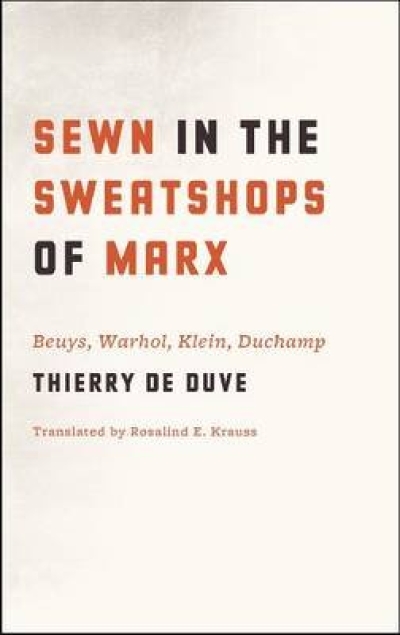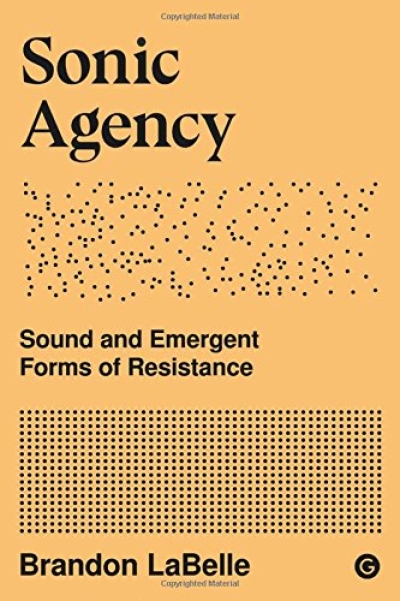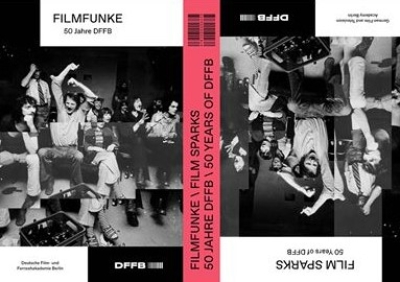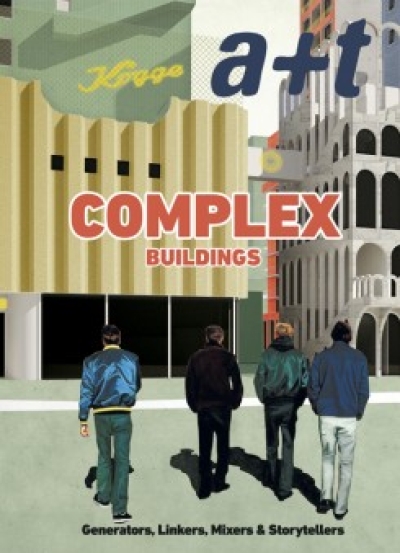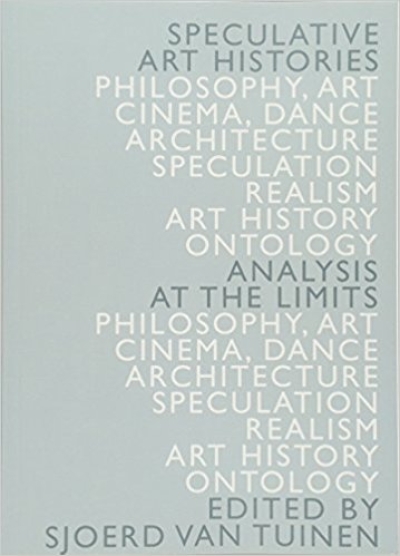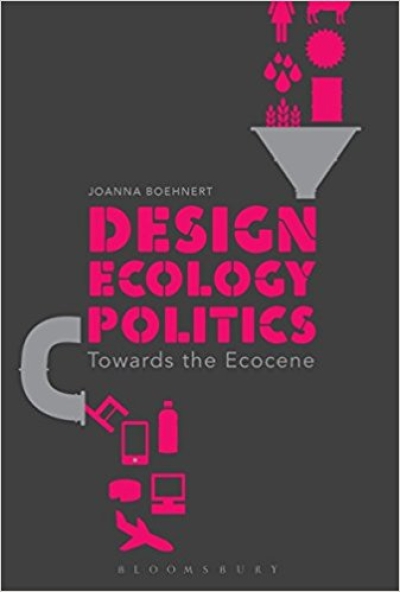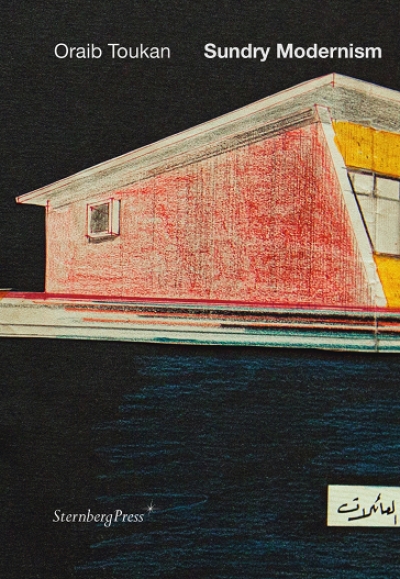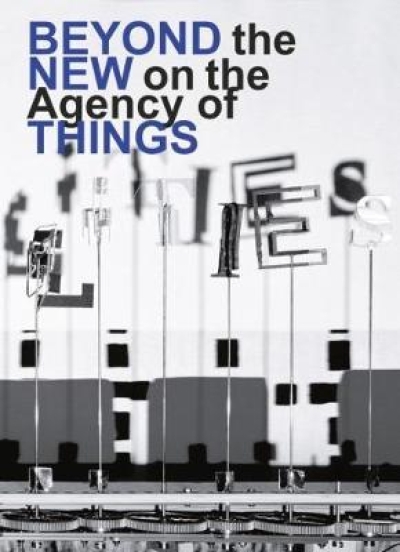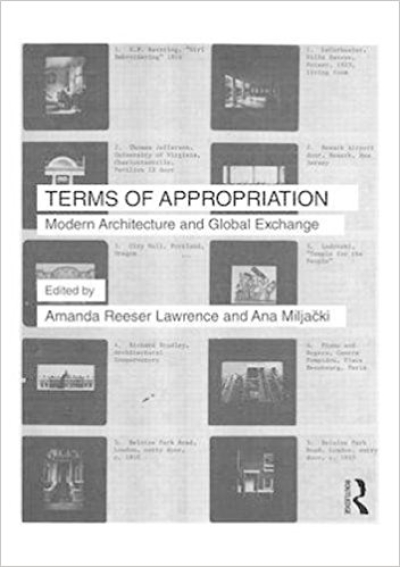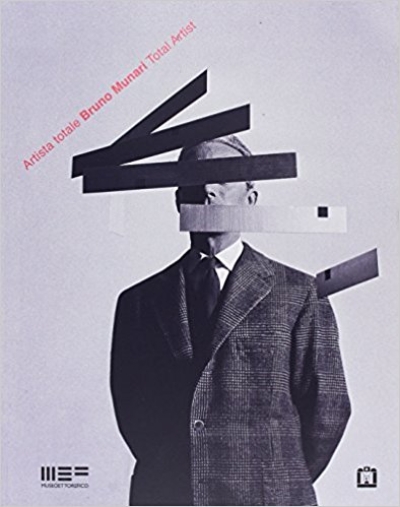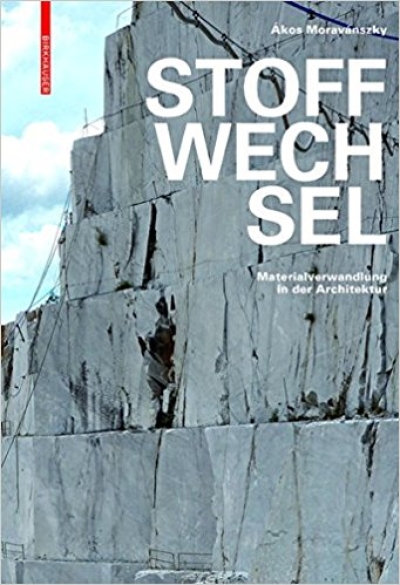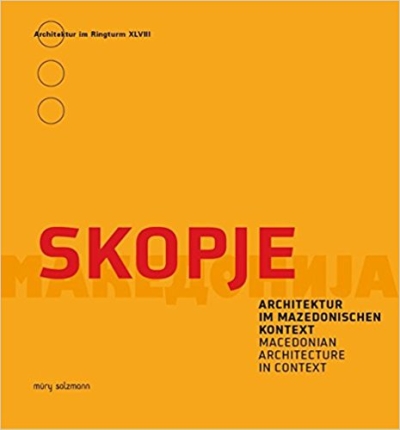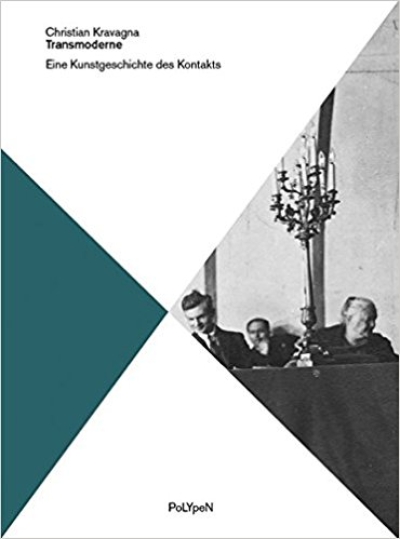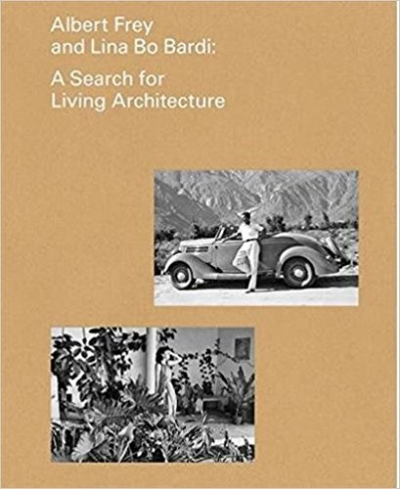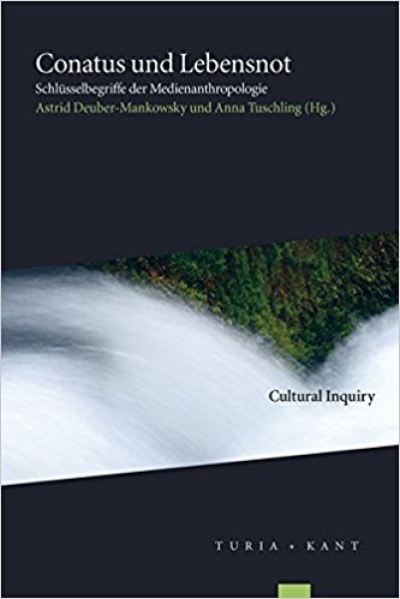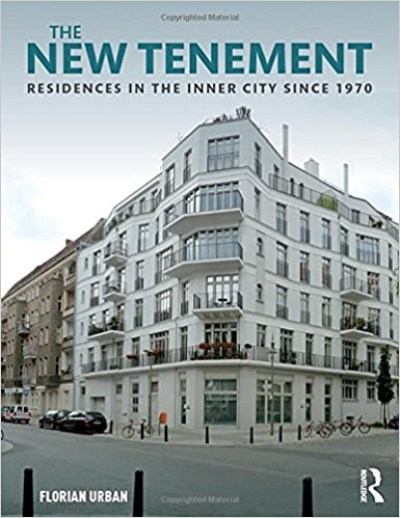Brandon LaBelle
Sonic Agency. Sound and Emergent Forms of Resistance
Nicolas Wackerbarth, Marcus Seibert (Hg…
Filmfunke. 50 Jahre DFFB / Film Sparks. 50 Years of DFFB
KW KunstWerke, Anna Gritz (Hg)
Judith Hopf. A Reader
Kenny Cupers, Markus Miessen (Hg)
Spaces of Uncertainty - Berlin revisited: Potenziale…
Katja Aßmann, Markus Bader, Fiona…
Explorations in Urban Practice. Urban School Ruhr Series.…
Kathleen James-Chakraborty
Modernism as Memory: Building Identity in the Federal…
Christoph Metzger
Neuroarchitektur
Rainer Hehl, Ludwig Engel (Hg)
Transtopia: Wie wir städtische Transformation gestalten
Isabell Lorey
Immer Ärger mit dem Subjekt. Theoretische und politische…
Jan de Heer, Kees Tazelaar
From Harmony to Chaos - Le Corbusier, Varese, Xenakis. and…
a+t 48
Complex Buildings. Generators, Linkers, Mixers &…
a+t 49
Complex Buildings. Dwelling Mixers
Glenn Phillips, Phillip Kaiser, Doris…
Harald Szeemann. Museum der Obsessionen
Fred Moten
Black and Blur (Consent Not to Be a Single Being)
Philipp Oswalt (Ed.)
Flying Plaza. Work Journal. The artist practice of Studio…
Holger Schulze
The Sonic Persona. An Anthropology of Sound
Maurizio Lazzarato
Experimental Politics: Work, Welfare, and Creativity in the…
Anitra Nelson
Small is Necessary. Shared Living on a Shared Planet
Lorenzo Ciccarelli
Renzo Piano Before Renzo Piano
Diane Barbé, Anne-Katrin Fenk, Rachel…
Things Don’t Really Exist Until You Give Them a Name:…
Jennifer Liese (Ed.)
Social Medium: Artists Writing, 2000 - 2015
P. Brugellis, G. Pettena, A. Salvadori…
Radical Utopias - Archizoom, Buti, 9999, Pettena,…
Sjoerd van Tuinen
Speculative Art Histories. Analysis at the Limits
MoneyLab
Reader 2: Overcoming the Hype
Museum Marta Herford (Hg.)
Max Bill: ohne Anfang, ohne Ende. No Beginning, No End
Diane Barbé, Anne-Katrin Fenk, Rachel…
Talking Cities. Urban narratives from Dar es Salaam and…
M. Rebecchi, E. Vogman
Sergei Eisenstein and the Anthropology of Rhythm
Alexander Kluge
Gärten der Kooperation / Gardens of Cooperation
Krystian Woznicki
Fugitive Belonging
Casa da Arquitetura
Power/Architecture
Andreas Rumpfhuber (Ed.)
Into the Great Wide Open
Molly Wright Steenson
Architectural Intelligence
P. Gadanho, J. Laia, S. Ventura (Eds.)
Utopia/Dystopia. A Paradigm Shift in Art and Architecture
Bettina Allamoda
Spandex Studies
Paul Kuimet, Gregor Taul
Notes on Space. Monumental Painting in Estonia 1947-2012
Romana Schmalisch
Mobile Cinema
Bell Hooks, Stuart Hall
Uncut Funk. A Contemplative Dialogue
Joanna Boehnert
Design Ecology Politics. Towards the Ecocene
Michael Roy (Ed.)
Jean Prouvé. Architect for Better Days
J. Höner, K. Schankweiler (Hg.)
Affect Me. Social Media Images in Art
Lucie Kolb
Studium, nicht Kritik
Raluca Betea, Beate Wild (Hg.)
Brave New World. Romanian Migrants Dream' Houses
Oraib Toukan
Sundry Modernism . Materials for a Study of Palestinian…
Terry Farrell, Adam Nathaniel Furman
Revisiting Postmodernism
Hella Jongerius, Louise Schouwenberg
Beyond the New on the Agency of Things
Daniel Drognitz, Sarah Eschenmoser,…
Ökologien der Sorge
Lori Waxman
Keep Walking Intently. The Ambulatory Art of the…
Verena Hartbaum
Disko 27. Retrospektiv Bauen in Berlin
Peter Osborne
The Postconceptual Condition
Amanda Reeser Lawrence, Ana Miljacki (…
Terms of Appropriation: Modern Architecture and Global…
Anne Magnien
Sur les pavés la pub
David Hamers, Jessica Schoffelen et al…
Trading Places: Practices of Public Participation in Art…
Boris Groys
In the Flow
Allan Sekula
Photography Against the Grain: Essays and Photo Works, 1973…
Stefan Moritsch (Hg)
Craft-Based Design: Von Handwerkern und Gestaltern
F. Duque, M. Mauracher (Eds.)
Entkunstung I
Jonas Mekas
Ich hatte keinen Ort: Tagebücher 1944-1955
Claudio Cerritelli (Ed.)
Bruno Munari. Total Artist
Kerstin Stakemeier
Entgrenzter Formalismus. Verfahren einer antimodernen…
Cloe Pitiot (Ed.)
Eileen Gray. Intimate Architecture. Une Architecture de l…
Issue 0
Klassensprachen. Written Praxis
Witte de With, Defne Ayas, Adam Kleinman
WdW Review. Arts, Culture, and Journalism in Revolt, Vol. 1…
Akos Moravanszky
Stoffwechsel. Materialverwandlung in der Architektur
Kerstin Ergenzinger
Navigating Noise
Todd Gannon
Reyner Banham and the Paradoxes of High Tech
Stephen Duncombe
Notes from Underground: Zines and the Politics of…
Olga Blumhardt , Antje Drinkuth (Hg.)
Traces: Fashion & Migration
Jacques Derrida, Catherine Malabou
Die Seitenallee
Kirill Gluschenko
Venets Welcome to the Ideal. (Venets Hotel)
Witte de With, Defne Ayas, Adam Kleinman
WdW Review: Arts, Culture, and Journalism in Revolt, Vol. 1…
Adolph Stiller (Hg.)
Skopje. Architektur im Mazedonischen Kontext. Macedonian…
Rachel Stella
E.1027 Maison en bord de mer - House by the sea (E1027)
Budde, Pepchinski, Schmal , Voigt (Hg.)
Frau Architekt: Seit mehr als 100 Jahren: Frauen im…
Jesse Lerner
L.A. collects L.A.: Latin America in Southern California…
E-Flux / J. Aranda, B. Kuan Wood, A.…
Supercommunity. Diabolical Togetherness Beyond Contemporary…
M. Mancini, G. Perrella, B. Reichenbach…
Pasolini's Bodies and Places
Research Center for Proxy Politics (Hg)
Proxy Politics. Power and Subversion in a Networked Age
Isabelle Graw
Die Liebe zur Malerei. Genealogie einer Sonderstellung
Georges Perec
Das Leben Gebrauchsanweisung
Merlin Carpenter
Militant
Merlin Carpenter
Heroes
Christian Kravagna
Transmoderne: Eine Kunstgeschichte des Kontakts
Fredrik Liew (Ed.)
Öyvind Fahlström. Manipulate the World: Connecting Öyvind…
Josef H. Reichholf
Haustiere. Unsere nahen und doch so fremden Begleiter
Guillaume Paoli
Die lange Nacht der Metamorphose: Über die Gentrifizierung…
D. Cornell, Z. Lima, J. Rosa
Albert Frey and Lina Bo Bardi: A Search for Living…
Marion von Osten
Once We Were Artists
Mario Carpo
The Second Digital Turn: Design Beyond Intelligence
N. Gribat, P. Misselwitz, M. Görlich (…
Vergessene Schulen. Architekturlehre zwischen Reform und…
Terry Burrows, Daniel Miller
Mute. Die Geschichte eines Labels: 1978 bis morgen
Astrid Deuber-Mankowsky, Anna Tuschling…
Conatus und Lebensnot. Schlüsselbegriffe der…
Anna-Lisa Dieter, Silvia Tiedtke (Hg)
Radikales Denken. Zur Aktualität Susan Sontags
O. Elser, P. Kurz, P. C. Schmal (Eds.)
SOS Brutalismus: Eine internationale Bestandsaufnahme
Florian Urban
The New Tenement: Residences in the Inner City Since 1970
Bik Van der Pol (Ed.)
School of Missing Studies
Elena Filipovic
David Hammons: Bliz-aard Ball Sale
Maria Cristina Didero
SuperDesign: Italian Radical Design 1965-75
Geraint Franklin, Elain Harwood
Post-Modern Buildings in Britain
